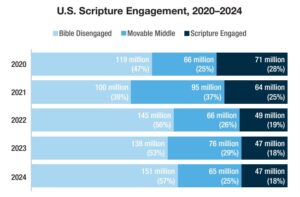
SAN DIEGO (BP)–A new insurance benefit for seminarians and added assistance for needy retirees were noted by GuideStone Financial Resources President O.S. Hawkins as enhancements that have been added to the Southern Baptist entity’s long-range ministry.
In an effort to reach out to seminarians, all full-time students at the six Southern Baptist seminaries will receive a free $10,000 life benefit beginning this fall, Hawkins told trustees during their July 30-31 meeting in San Diego.
“We want to begin a lifelong partnership with seminary students,” Hawkins said. “Many of these students are unable to afford even basic protection for their family. This is just one way we can begin to enhance their financial security.”
Describing new provisions in GuideStone’s financial assistance ministry, Hawkins said, “We have recently approved expanded guidelines that will enable more of our retired pastors or their widows to qualify for financial assistance. Additionally, as of Jan. 1, 2008, we will double the amount of monthly assistance to our most needy recipients. In some cases, this will amount to as much as $530 per month.”
Such changes are part of GuideStone 90, the first step in the long-range GuideStone 100 plan to guide the organization’s work through 2018, its centennial year.
During the meeting, trustees also heard an update on GuideStone’s operations from Chief Operating Officer John R. Jones and approved the annual re-rate recommendation for GuideStone’s medical plans.
Hawkins, in his GuideStone 90 update to trustees, drew from Proverbs 29:18: “Where there is no vision, the people perish.”
“Vision is vital. Where there is no perception of what God wants you to be, the people have no direction,” Hawkins told trustees.
The launch of the MyDestination Funds was a major objective for GuideStone 90, Hawkins reported, noting, “These five registered date target funds are managed to specific retirement dates and may be a suitable solution for investors of all ages looking to create or maintain a diversified, age-appropriate retirement choice in a single fund.”
Each of the MyDestination Funds is a diversified “fund-of-funds” that has an asset allocation that gradually becomes more conservative as an investor approaches retirement.
Another GuideStone 90 initiative reviewed with trustees was the re-design of GuideStone’s websites for easier navigation and added functionality. The websites are the most popular media through which participants receive information about GuideStone.
Jones, in his report to trustees, recapped the operational areas of GuideStone for the previous quarter. With growth in the capital markets, Jones told trustees, “Thus far, 2007 has been an incredible year for our participants in growing their account balances through the success we have enjoyed in our investment funds.”
For the five years ending June 30, eight of the nine GuideStone Select Funds (GS2 class) and nine of the 14 GuideStone Funds (GS4) exceeded the median of their “peer universe” according to Lipper, a nationally recognized Reuters organization that compares the total return performance of mutual funds with other funds having similar investment objectives.
“A highlight for the quarter was closing the month of April with more than $10 billion in assets under management,” Jones said. “This significant milestone represents growth in the capital markets as well as increased contributions by our participants.”
Jones told trustees there has been “significant migration of participants’ assets into the MyDestination Funds. Through the first six months of 2007, participants have moved over a quarter of a billion dollars into these funds.”
GuideStone’s financial assistance area has experienced good progress during the first half of 2007, trustees were told, with more than 240 new donors joining thousands of others in providing resources for GuideStone to undergird more than 2,000 retired pastors or their widows who have significant financial needs. Expanded guidelines approved earlier this year have enabled the financial assistance staff to launch a discovery project that will identify others who need assistance.
The trustees’ relief committee added or upgraded 50 recipients to the financial assistance roll during the first six months of 2007. They approved 17 two-year monthly or expense grants.
In the insurance area, Jones highlighted success in growing the medical plans’ participant base — up more than 15 percent growth over the past three years – “largely due to the affordability and flexibility of the plans offered to participants.”
After three consecutive years of rate stability for personal medical plan participants, the trustee insurance committee reported that it will be necessary to pass along a rate increase to participants in some medical plans for 2008. The increases were described as being in line with projected national increases for Preferred Provider Organization (PPO) plans.
In the face of persistent, double-digit (10-12 percent per year) medical inflation over the past three years, GuideStone was able to avoid passing along inflation-based increases through savings in its extensive provider network and broader array of medical plans. More than half of Personal Plans participants received rate decreases in at least one of the last two years. Over the past three years, the cumulative average national increase for PPO medical plans has been approximately 26 percent. This increase includes medical plan inflation as well as prescription drug inflation.
“Even with anticipated rate increases for 2008,” Hawkins said, “in many areas GuideStone medical plans will still be priced lower than they were three years ago. In fact, almost 80 percent of our participants will pay less for their medical coverage in 2008 than they paid in 2004. With a wide variety of plans available, participants have the opportunity to control costs by choosing a plan that meets their needs and their budgets.”
For example, a participant with family coverage can move from the Health Legacy 200 into the Health Choice 500, which has a slightly higher deductible but a lower family out-of-pocket maximum. Even accounting for age-based rate increases, this move could net no rate change from 2007 to 2008 for the participant. In some areas of the country, moving to a higher deductible plan could cut a participant’s monthly rate in half.
For the third year in a row, there will be no rate increase for the Seminarian Plan or the Senior Plans; for the latter, the outpatient benefits have been improved for 2008 by removing the $5,000 annual cap on Part B Medicare approved amounts.
More information related to the 2008 medical rates will be available within the next 60 days, with customer service ready to help participants and churches look at the various plans and their features to select the plan that best meets their needs and budget.
Hawkins, in his closing remarks to trustees, said, “Every decision we make as trustees and staff must be considered in terms of our vision statement, which says, ‘We exist to honor the Lord by being a lifelong partner with our participants in enhancing their financial security.’
“In that statement we find our motivation -— to honor the Lord. We find our message —- to be a lifelong partner. And we have our mandate —- to enhance the financial security of our participants. We must always ask, ‘Will this decision enhance the financial security of the pastor at the crossroads and our other participants?'”
–30–













